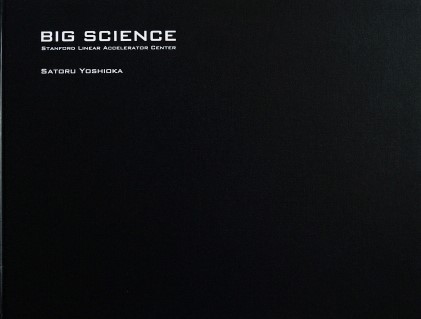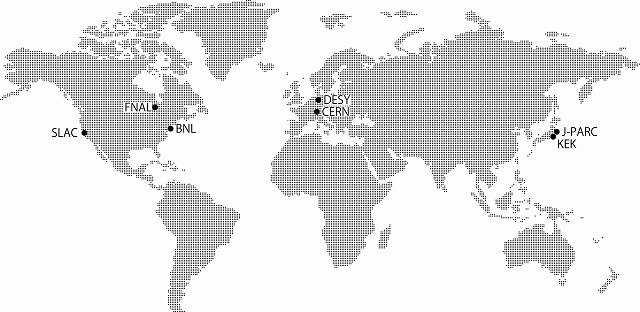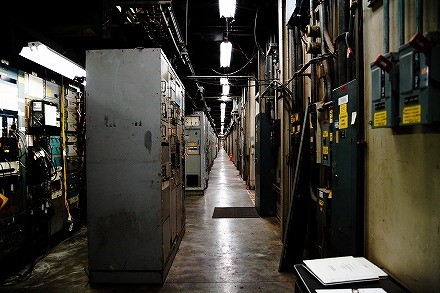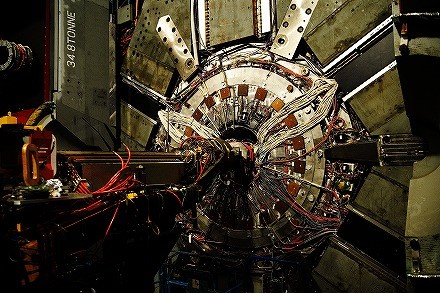|
写真集:ビックサイエンス / スタンフォード線形加速器センター Book: Big Science / Stanford Linear Accelerator Center Publisher / 出版社 : PPrP *2012年 東京都写真美術館図書室に収蔵 |
|

|

|
|
|
|

|

|
|
吉岡さとる作品集#1 [Big Science Stanford Linear Accelerator Center] 「ビックサイエンス スタンフォード線形加速器センター」 リミテッド50冊限定 仕様 ———————————- イメージ/30点 全編/ /38ページ リミテッドエディションナンバー入り サイン入り
2005年よりアメリカ・カリフォルニア州にあるスタンフォード線形加速器センター(現在SLAC国立加速器研究所)を訪れ始め、撮影を開始。2007年より本格的に世界中の素粒子物理学研究所の世界を、視覚的研究プロジェクトとして撮影し続けています。
時に、人は研究所の高いフェンスの内側に想像を膨らませる。 私は世界を旅しながら研究所の内側を、昼間の太陽光と夜の人光で 切り取ってきた。そこには日常的な作業域、通りなど一般的な風景や建物が写されている。そこには最新の実験装置、運命を終えた実験装置なども写されている。 研究施設は日夜変化し続ける。そして、今日訪れた研究施設は一見あまり 変化がなくても、昨日とはまったく違う場所になっている。スタンフォード線形加速器センターは1962年に設立された、40年以上にわたり、世界の高エネルギー物理学を牽引してきた研究施設だ。
なぜ、われわれは存在するのか? この研究所での加速器実験により、これらの質問に答えが出されてきた。そんな特別な場所、スタンフォード線形加速器センターの最後の姿を見てほしい。
2008年から、この場所はスラック国立加速器研究所と名前が変更され、高エネルギー物理学研究の歴史的役割から光子科学、粒子と粒子天体物理学、そしてX線自由電子レーザー(LCLS)利用研究など多目的研究施設として生まれ変わった。 |
Satoru Yoshioka Photographic Works # 1 [Big Science: Stanford Linear Accelerator Center] Limited volume of 50 * Specification Photography images / 30 and 38 whole pages limited edition number + autographed Since 2005, Satoru Yoshioka has been visiting to high energy physics laboratories; in 2006 he started photographing from SLAC / Stanford Linear Accelerator Center (now SLAC National Accelerator Laboratory) in California. Over several years he photographed in the United States, Japan, Germany and Switzerland.
*This is his first released photography book from his project A laboratory continues to change day and night. Even if there are seemingly no changes, the research institute visited today is a place just different from yesterday.
The Stanford Linear Accelerator Center was established in 1962. This
place was a central research facility in the world of high-energy
physics for over 40 years. SLAC has a 3.2 km linear accelerator, and this equipment generates charged particles (electrons and positrons) accelerated to nearly the speed of light and makes them collide head-on to create small big bang. BaBar detector (height, horizontal width of about 7.6 meters, weighs 1200 tons) records B mesons and anti-B mesons decay (BaBar experiment / studies of CP-violation in B-meson decays). Immediately after the Big Bang, about 13.7 billion years ago, matter and antimatter existed in equal numbers. We know that matter and antimatter cancel out each other; but if this is true, then things will not exist in this world. However, we exist and live, and we are matter, not antimatter. Why did the antimatter disappear, but some matter remained? In 2008, the BaBar and *Belle experiment proved the correctness of the Kobayashi-Maskawa theory. These two professors were awarded the Nobel Prize in Physics. *Belle experiment : High Energy Accelerator Research Organization (KEK), Tsukuba, Japan |